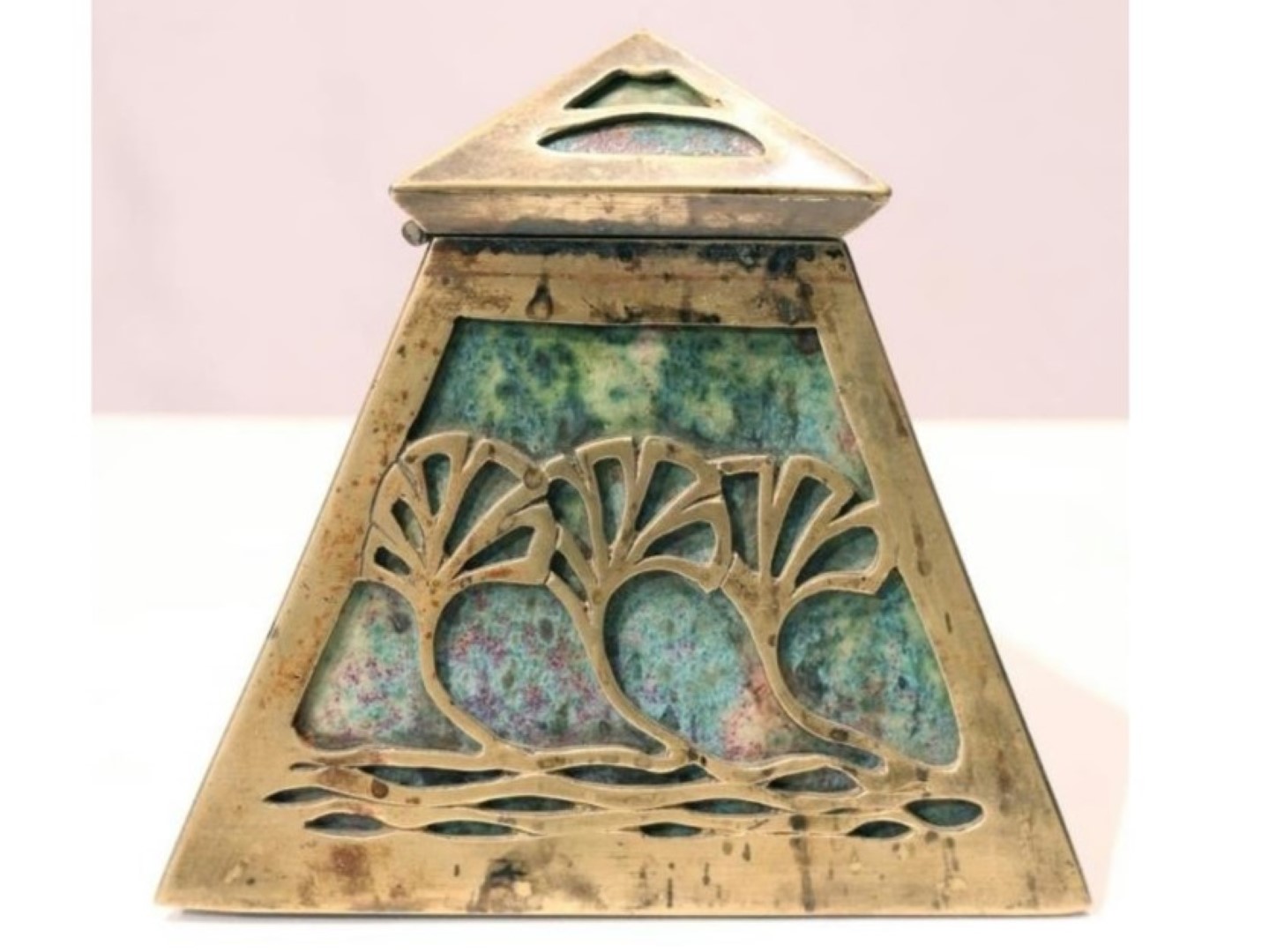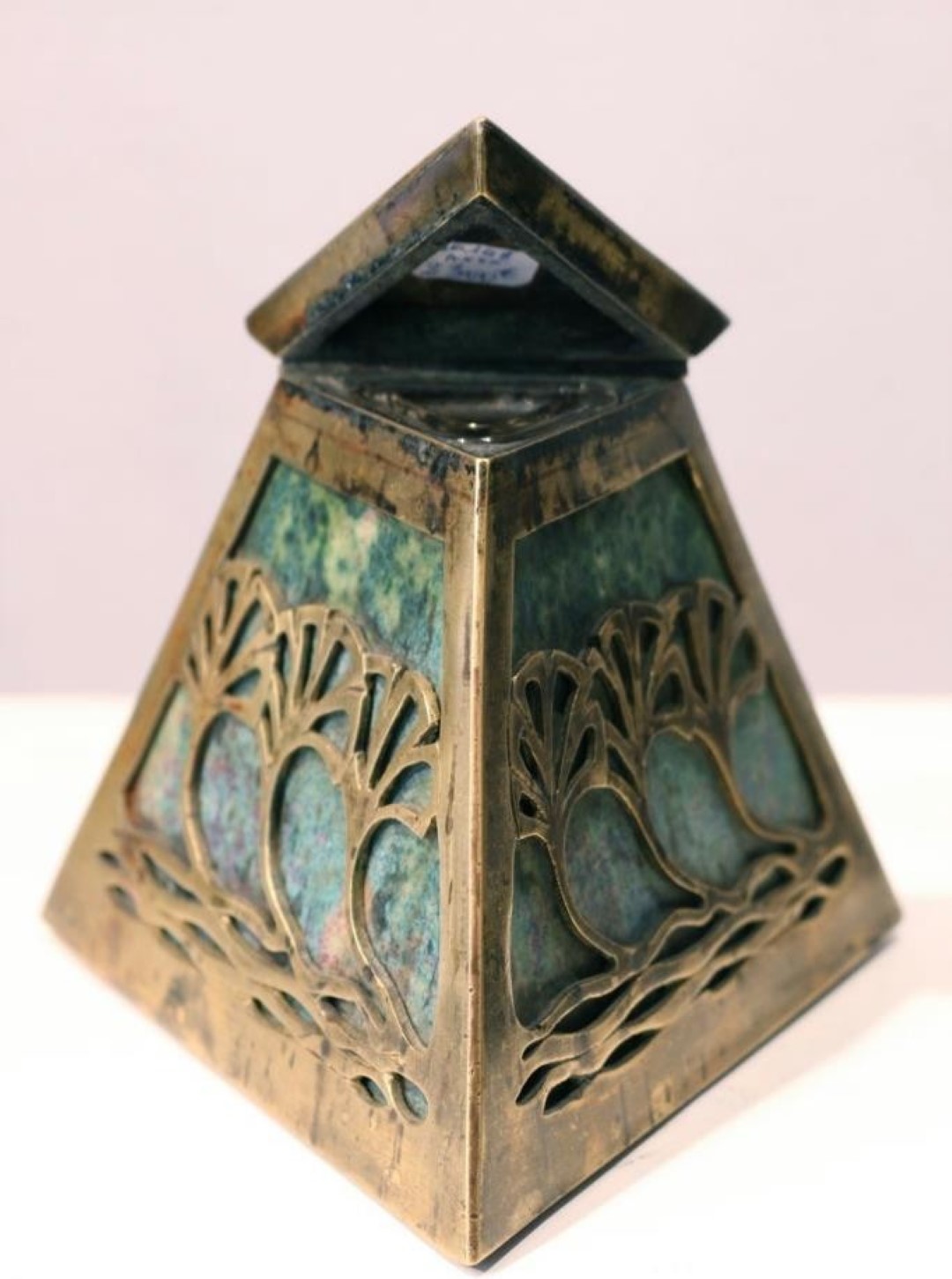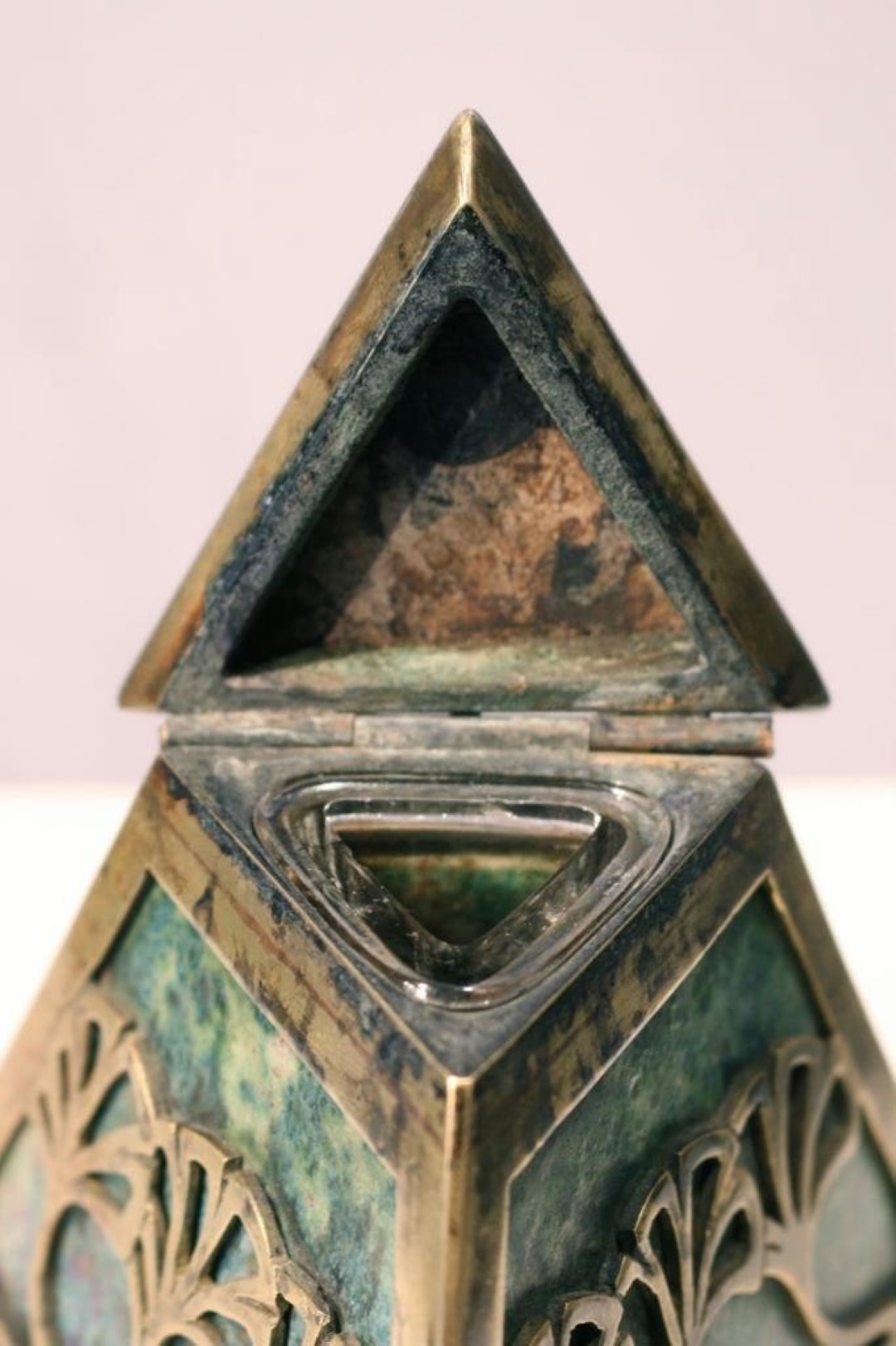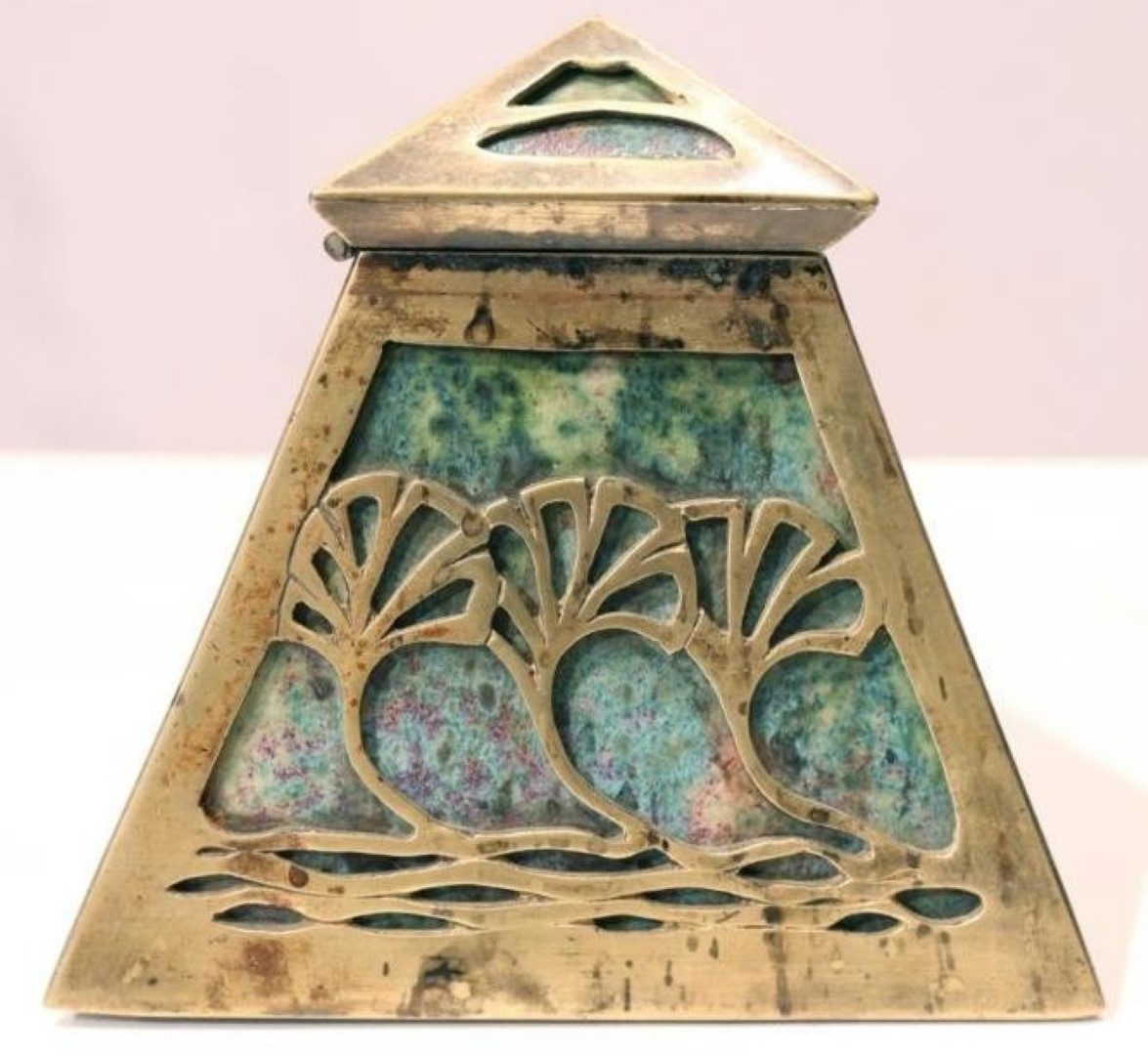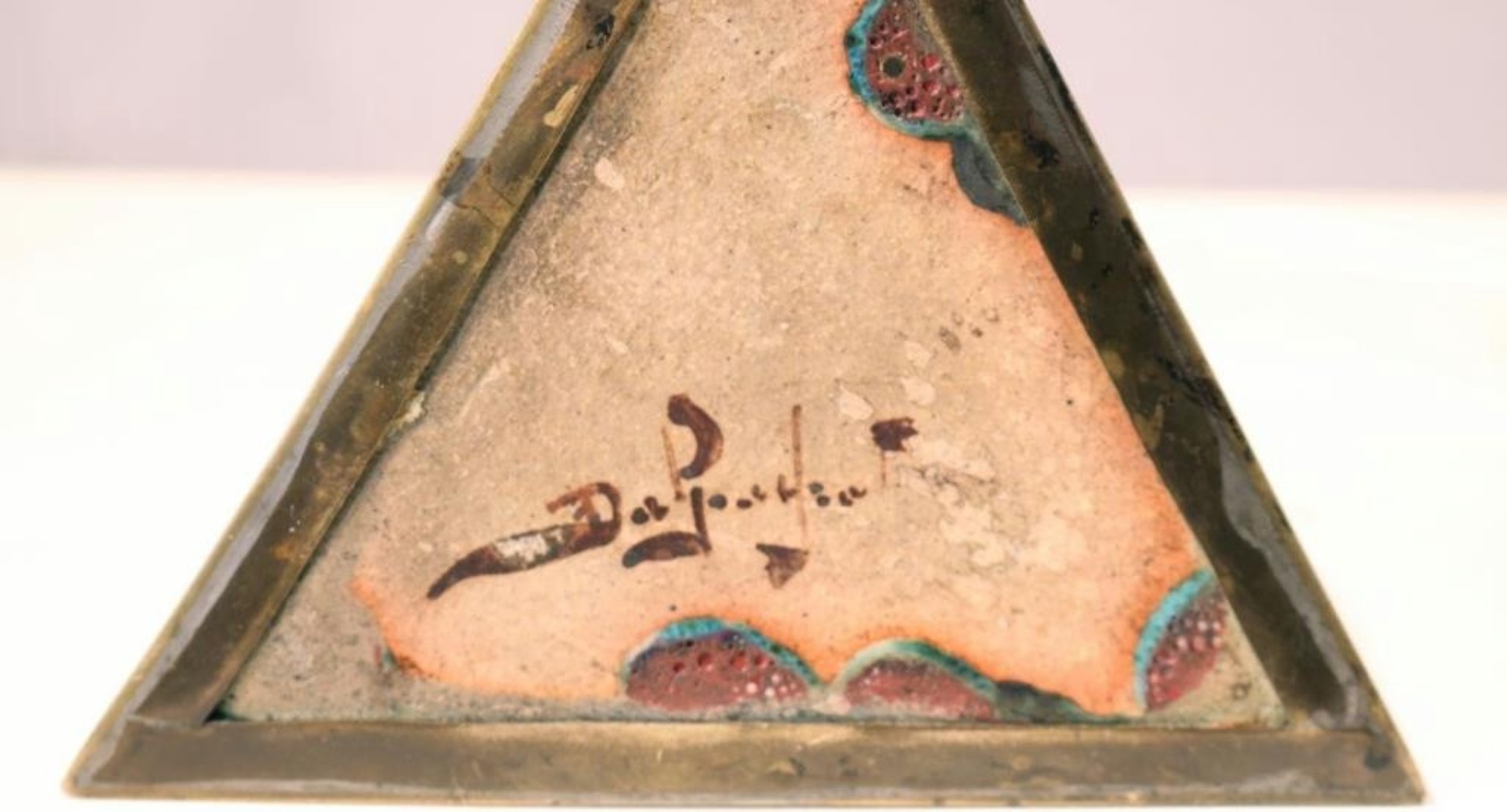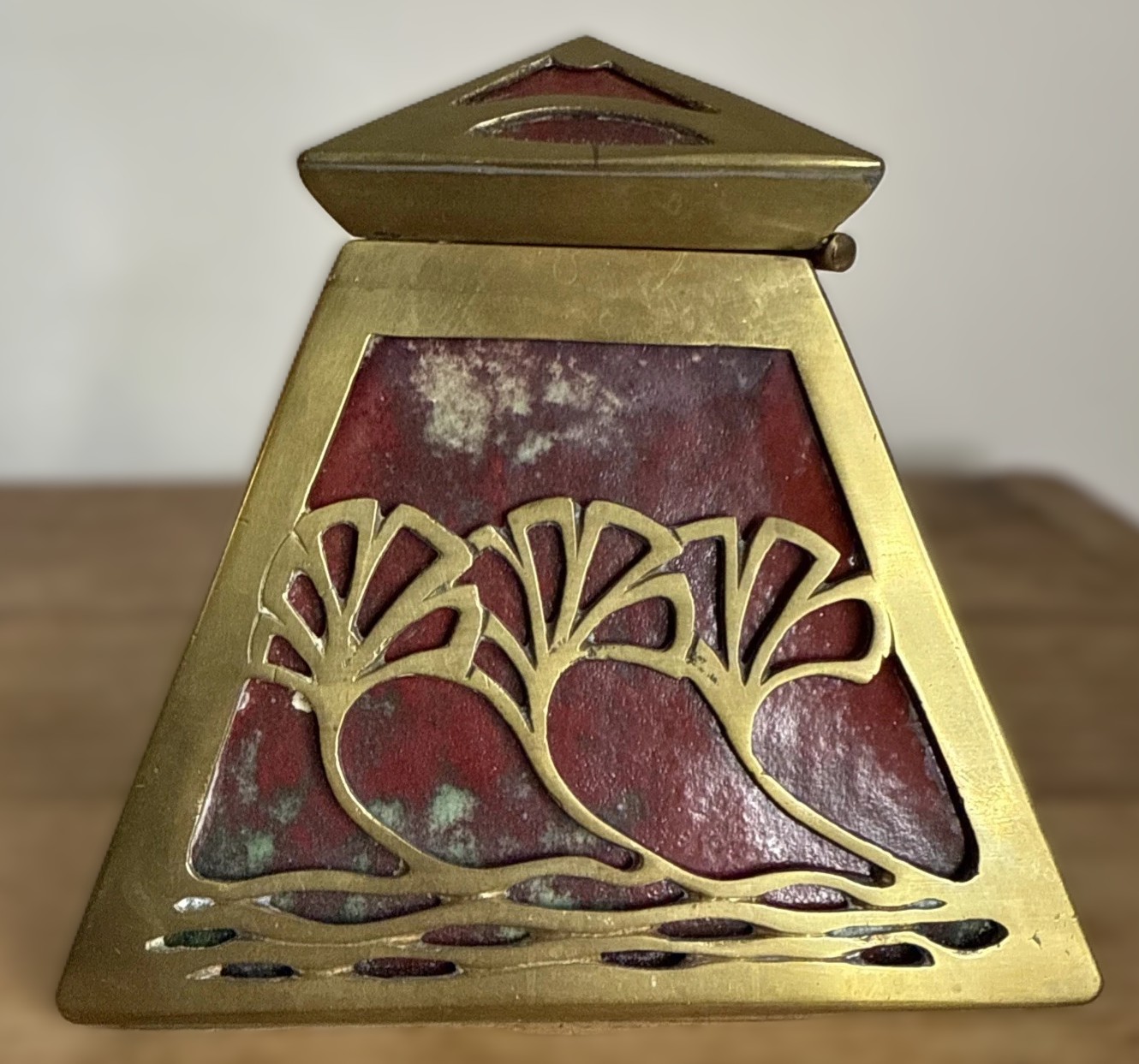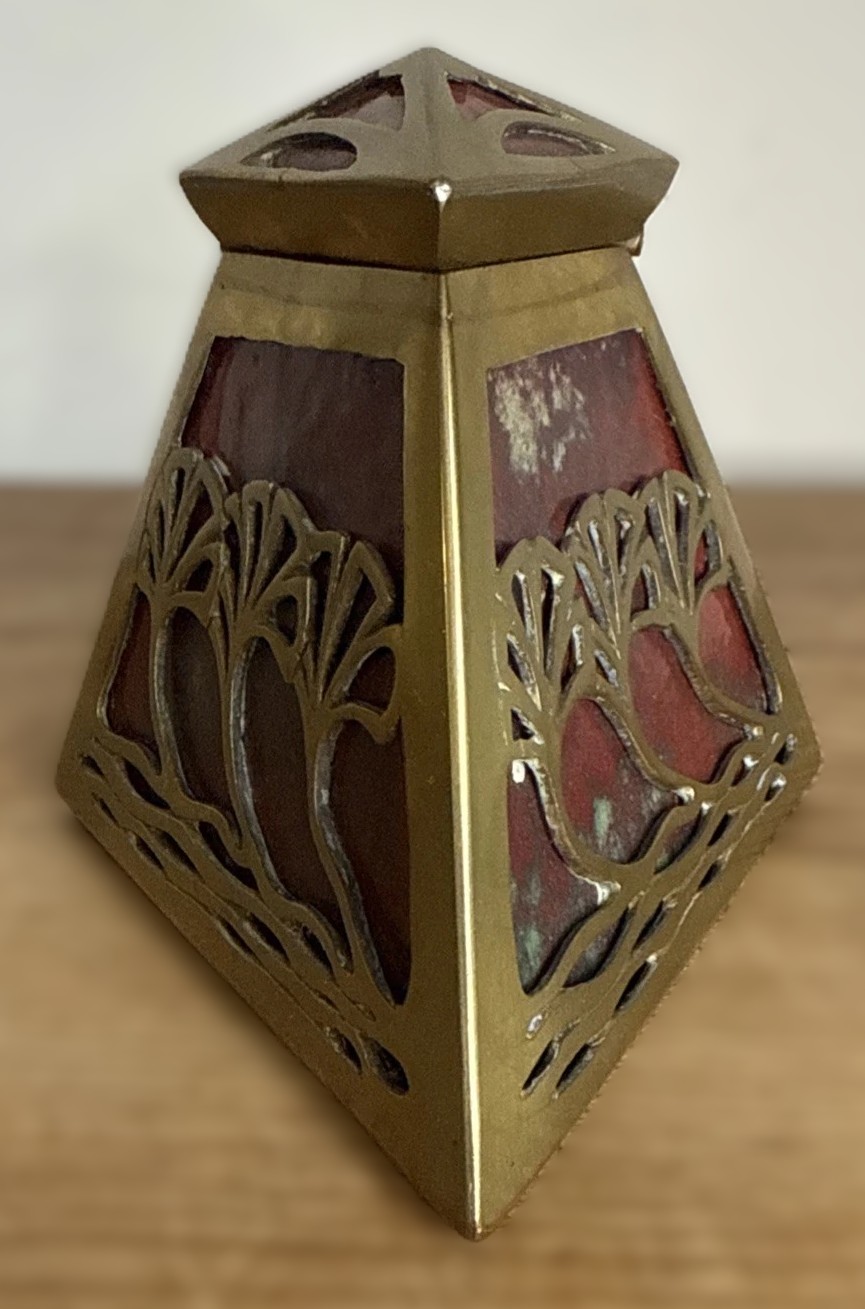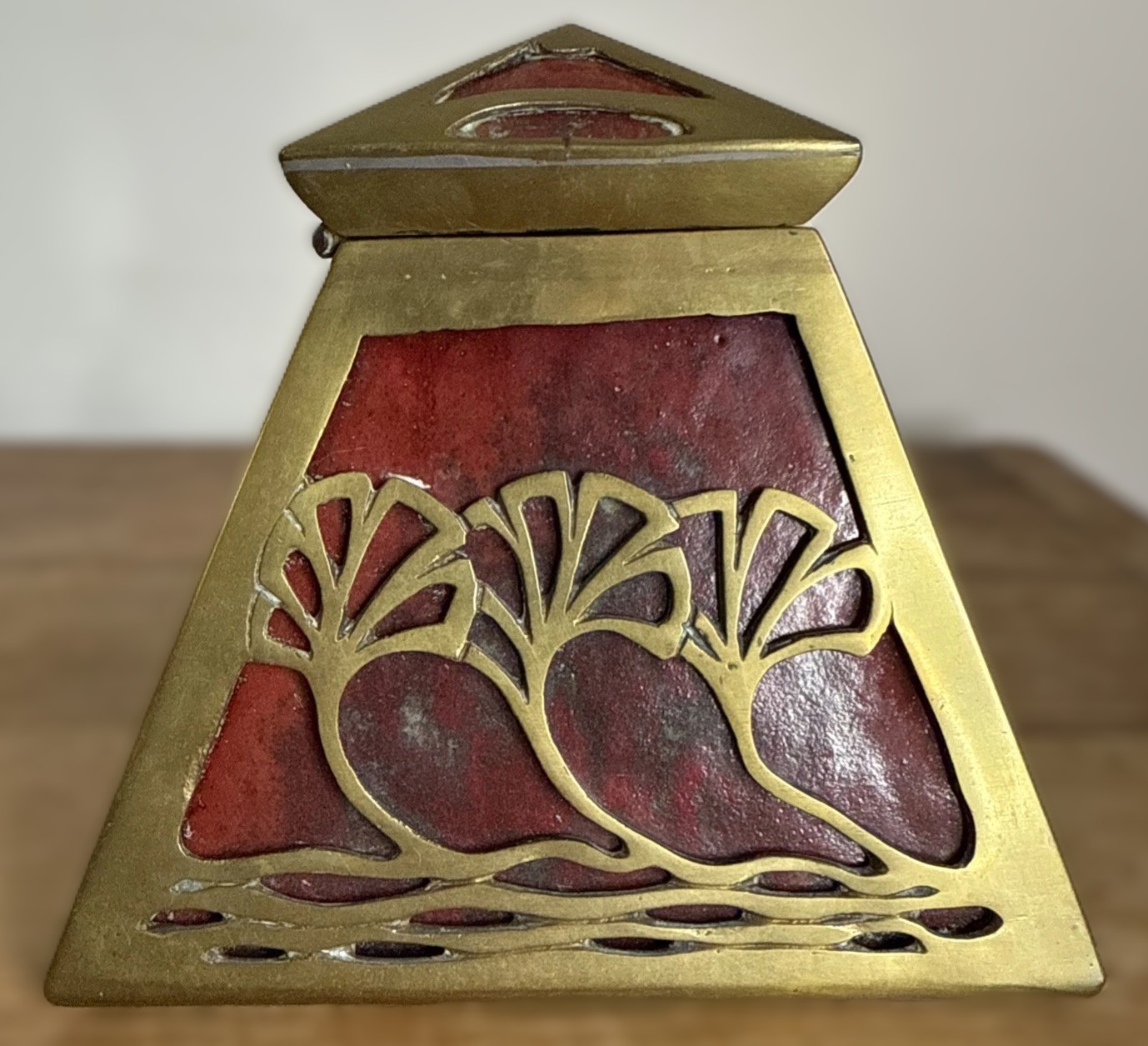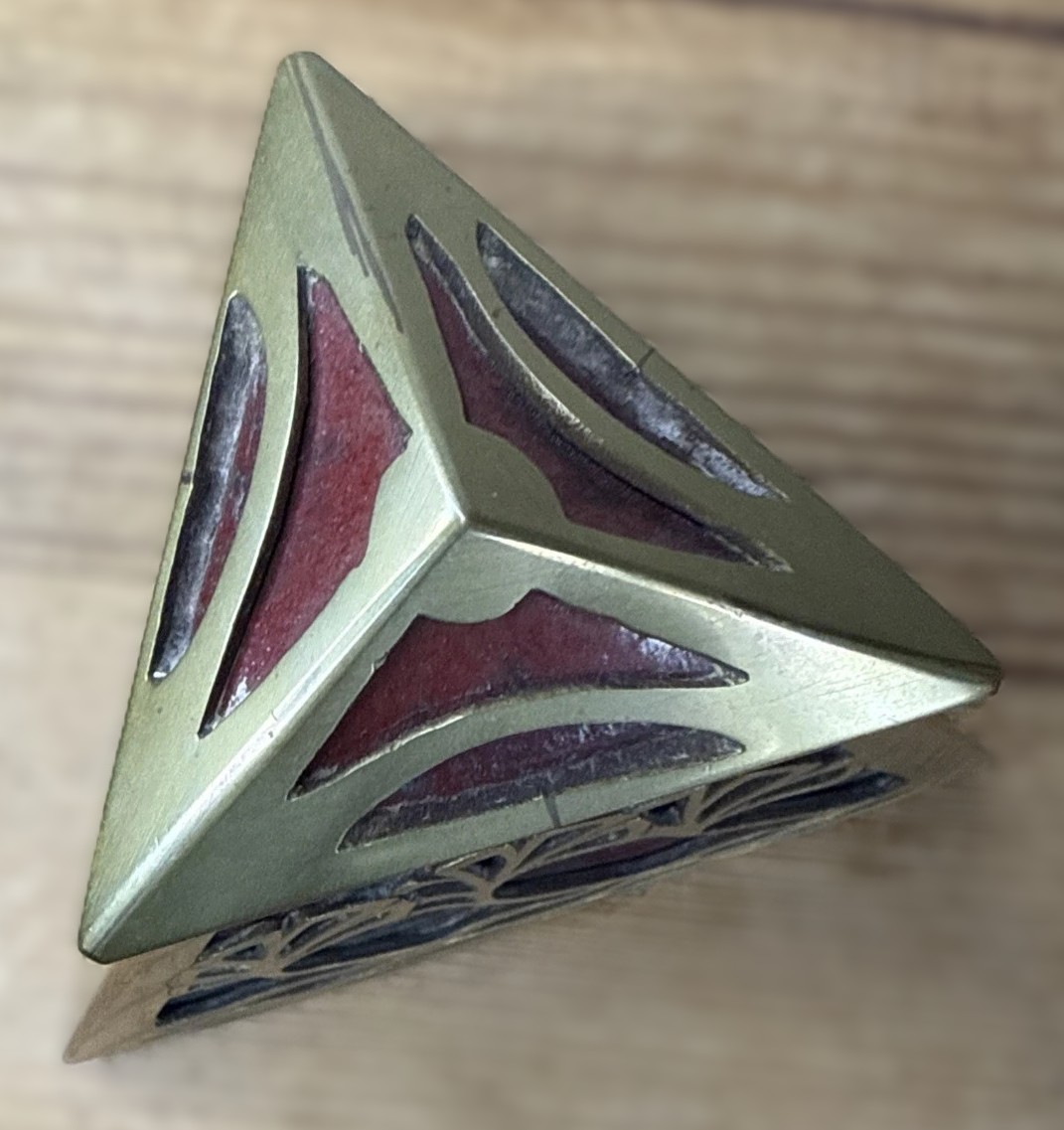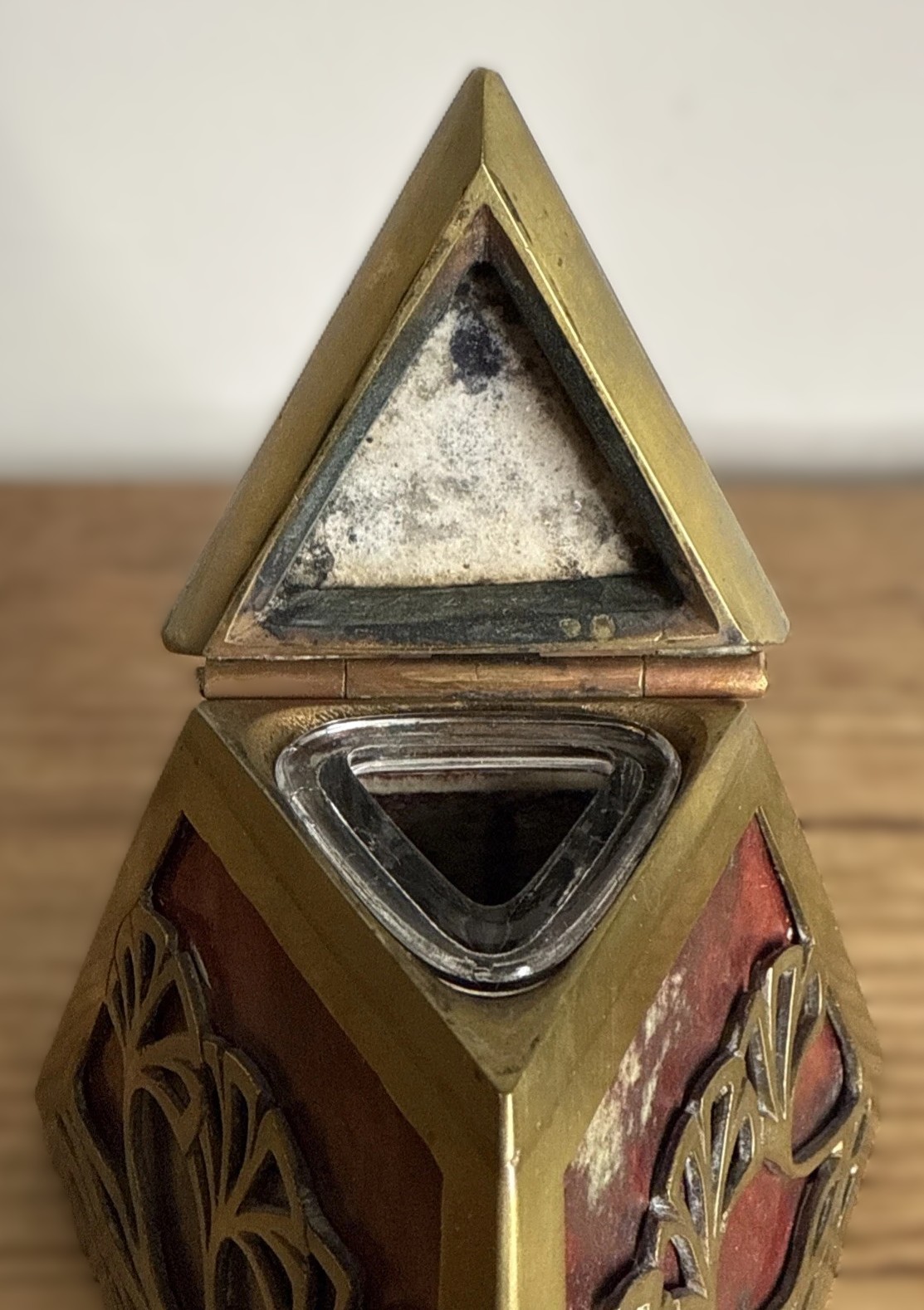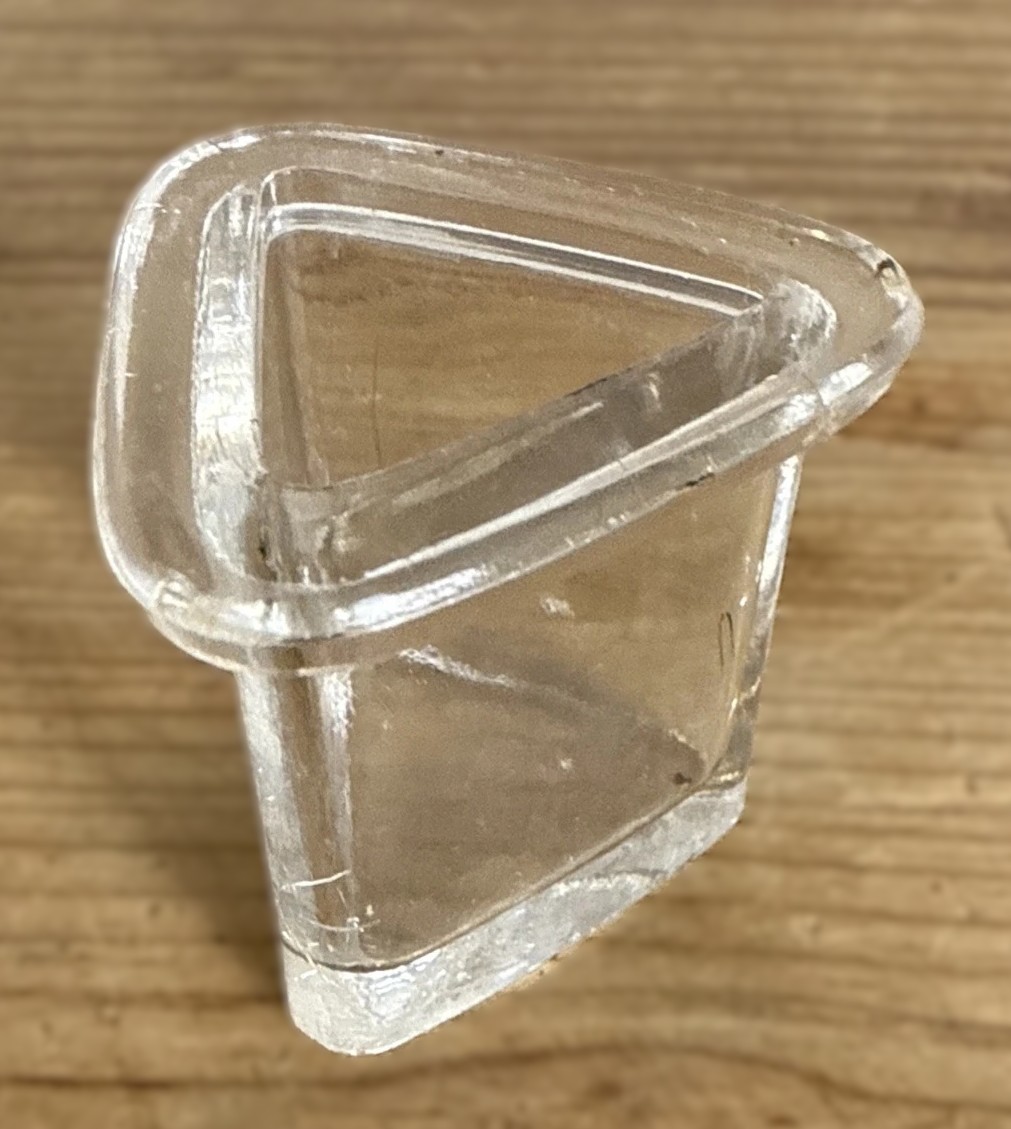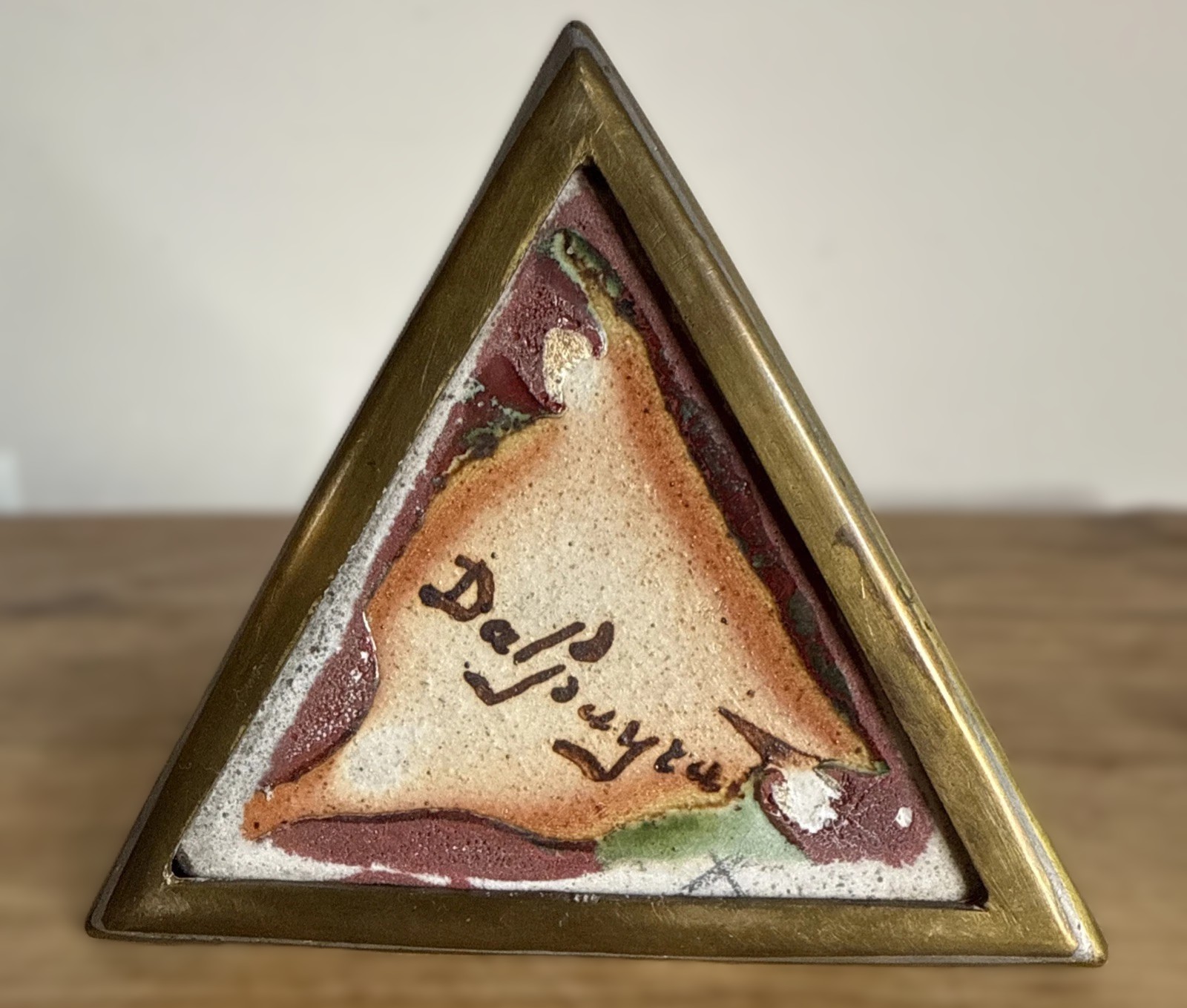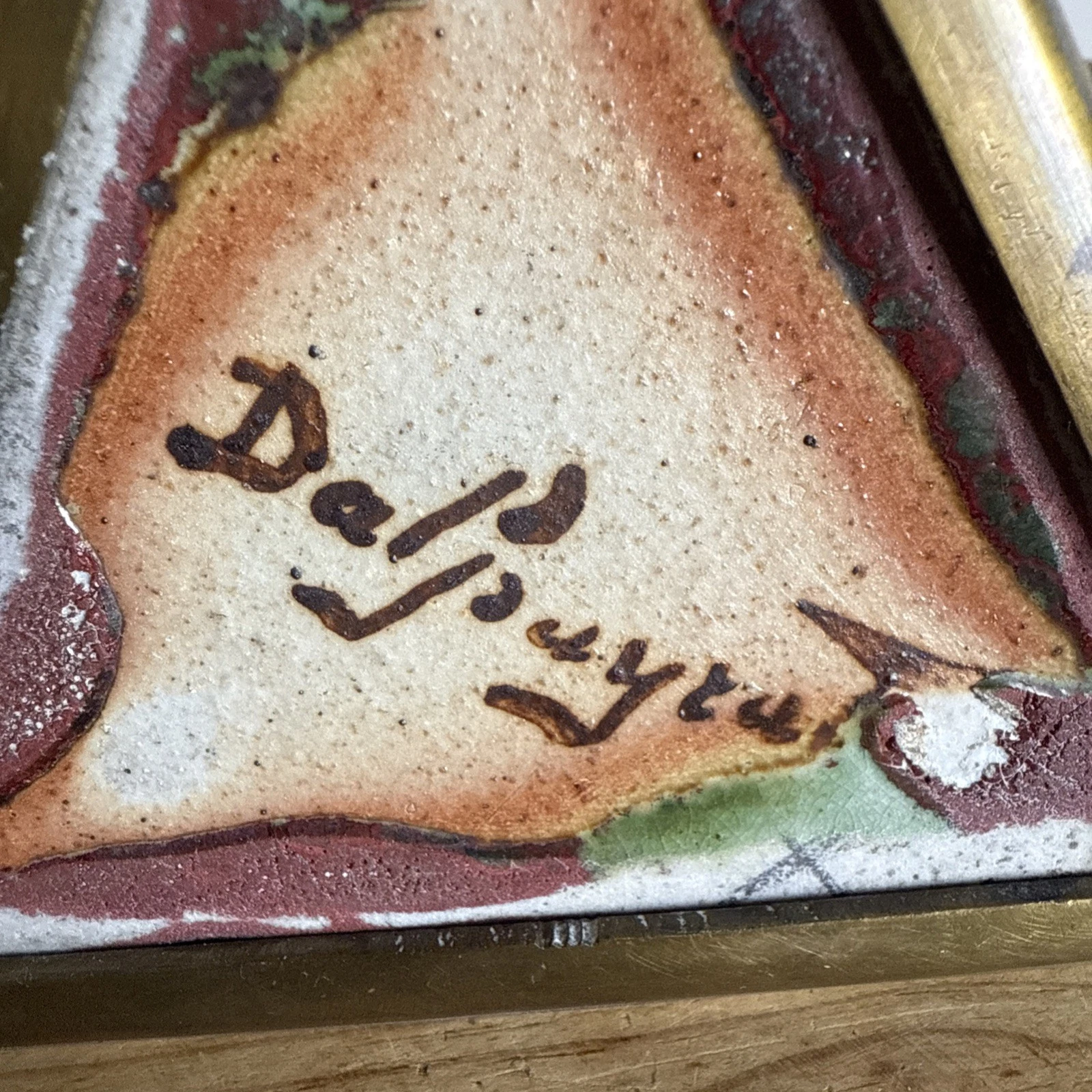
Dalpayrat Sandstone Inkwell in Copper Frame
| Categories | Art Nouveau, Ceramics/Porcelain "Named" Makers |
| Material | Coppered metal, Stoneware |
| Markings | Signed |
| Manufacturer | Dalpayrat |
| Origin | France |
| Date or Era | circa 1900 |
| Measuring | 5 ½” x 4 ¾” x 5” high |
Art Nouveau inkwell in green glazed sandstone signed Dalpayrat (1844 – 1910). The model of the cut-out copper frame, depicting gingko leaves is made by Abel Landry (1868 – 1923), architect and art modeler. This commissioned object was sold in the Parisian gallery of the Maison Moderne directed by Julius Meier-Graefe.
Pierre-Adrien Dalpayrat (1844 – 1910) Born in Limoges, Pierre-Adrien Dalpayrat learned the art of painting porcelain at the School of Drawing in 1859 and later the Municipal School of Painting on Chinaware. He apprenticed in Bordeaux at Jules Vieillard’s atelier and afterward worked in several different factories in France before landing at the Poterie de Monaco, where he first became interested in stoneware. The turning point in his career was 1889 when he established his own studio at Bourg-la-Reine and in 1891 he presented his first wares. In 1892 he signed a contract to collaborate with sculptor and ceramist Alphonse Voisin-Delacroix and that same year their resulting stoneware creations were exhibited in Georges Petit’s gallery. The French painter and sculptor Jean Coulon then became his partner in 1893 after Voisin-Delacroix’s death.
By the late 1890s Dalpayrat had at least 44 employees working at his atelier and was enjoying great success. He was awarded a gold medal at the Exposition Universelle in Paris in 1900, appointed to the Légion d’Honneur, and his porcelain and stoneware vessels were sold by the likes of Siegfried Bing. However, Dalpayrat would retire to Limoges in 1906 due to financial problems and abandoned ceramics for painting. He is remembered primarily for his ceramics, especially his pieces in stoneware and porcelain in deep red “sang-de-boeuf” (oxblood) called “Dalpayrat red”, which often appeared alongside other rich colors like turquoise, blue, and green. Dalpayrat’s legacy lives on and he is considered, along with Ernest Chaplet, Auguste Delaherche, and others, to be among the most important French ceramists from the turn of the 19th century.
Red example sold for $682 in November 2025
Content disclaimer. The information posted is the owner’s best knowledge and may not have been vetted by the SOIC. We welcome comments, corrections, and additions, working to make our website information comprehensive and accurate.
Join the Society of Inkwell Collectors (SOIC) – it’s free!
Founded in 1981 as a non-profit organization,
we are documenting inkwells (and accessories).
We’re here to help and inform!
